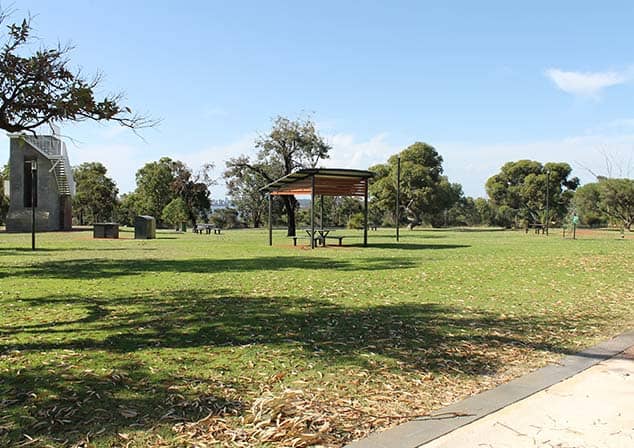Wireless Hill Reserve

Wireless Hill Park is 40-hectare (99-acre) park located in Ardross, Western Australia that is home of the old Applecross Wireless Station the first radio station located in Western Australia. The buildings of the station have been restored and now house Wireless Hill Museum. Wireless Hill Museum. The site is recorded as part of the Register of the National Estate. and also in the State Register of Heritage Places.
The park also has a significant urban bushland region.
History
In 1909, the Commonwealth Government decided that wireless Telegraphy stations would be set up along the coast of Australia In 1910, the Commonwealth Government granted an agreement for construction of the Perth station to Australasian Wireless Limited. Clearing the site and building began in 1911. The Applecross Wireless Station completed and officially inaugurated on September 30, 1912.
The station was originally operated and owned through Australasian Wireless, on behalf of the Postmaster General’s Department (PMG) in the form of an online service to ship.
In 1916, as a result from World War I In 1916, as a result of World War I, the Royal Australian Navy assumed control of this station (and all Australian coastal radio stations) with the intention of retaining staff members and granting them naval rank with the rank of Non-commissioned officers. The Navy maintained control of the station until 1920. The Navy was in charge of the station once more from 1939 until 1945 through World War II with the same staff.
In 1947, the newly-formed Overseas Telecommunications Commission (OTC) was given control over all wireless networks from the PMG.
Between 1967 and 1968, OTC relocated all it’s operations out of Wireless Hill to its new station in Gnangara in the year 1968. In that year, it was decided that the Wireless Hill station closed. The land was sold over to Melville in City of Melville in the year 1969, and in 1971 it was officially named Wireless Hill Park. (The area was previously known as Wireless Hill by the local residents.)
In 1970 the West Australian VHF Group (an amateur radio club) proposed establishing a telecommunications museum. In 1974 , work began to transform the station and in 1979, the Wireless Hill Telecommunications Museum was officially inaugurated as a part of the contribution to the sesquicentennial celebrations in Western Australia. In 2015, following renovations the museum was reopened with the designation of the Wireless Hill Museum.
Wireless Hill Park has been declared a National Park as a National Trust of Australia Heritage Site National Trust of Australia in 1992. The park was listed on the Western Australian Register of Heritage Places in 1997.
The History of Wireless Hill
Wireless Hill has been a location of communication since the beginning of time.
Prior to that, it was utilized for the Noongar Beeliar Aboriginals as an observation point and as a location to transmit smoke signals, Wireless Hill became the site of the Applecross Wireless Station in 1912.
Wireless Station Wireless Station is one of the first links to Australia that used radio technology. It was used for communications throughout World War One and World War Two. Utilizing Morse Code, the Station connected with ships along the Australian coast with an 112 metres high. For a timeline of the history of the Station Click here.
In 1968 , the Station was evacuated and is included in the Western Australian Register of Heritage Places. It is located in the former Engine Room of the Station, Wireless Hill Museum currently has regular exhibits along with educational talks, activities for school holidays, and an educational The Museum Learning Program.
The War Memorial
The memorial to the war at Wireless Hill is a site for commemorations and also an iconic landmark that commemorates the men and women who been part of Australia’s defense forces.
The War Memorial Concept
People who are serving for the defense of Australia are normal people, everyday people like me and you who did extraordinary work in unusual situations.
The design elements of the memorial include:
- Nine steel vertical blades with double sides in a circular arrangement
- Side A is an image that is panoramic. If viewed from a distance, the blades are joined to form a single picture
- Side B is made up of life-size laser cut silhouettes which represent different discipline and uniforms. They are shaped by an arrangement of words drawn from text that was selected by Applecross RSL in concert with Applecross RSL
- Lights to illuminate the memorial at night
- The four arms of the Plaques of the forces of defence
Wireless Hill Reserve has located very close to Perth Cash 4 Cars. you can check below Google Maps.
At Perth Cash 4 Cars, we pay the highest price for any vehicle, at any time throughout Perth. Same day payment & removal guaranteed!
